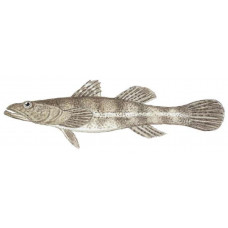Latin name
Gobiomorus dormitor
Other names
Bigmouth Sleeper
Identification
Sleepers are closely related to gobies, although they do not have the usual gobies sucking disc, and the pelvic and ventral fins are separated. Most sleepers are small, although the larger species have some food value. Fat sleeper is usually dark brown and mottled, it has a bluntly rounded head, a large mouth, no visible lateral line and a rounded tail fin. It bears a resemblance to the fat mullet, but its second dorsal and anal fins are large and the same size. The Bigmouth sleeper can exceed 2 feet in length and is much thinner than the fat sleeper. It has a large, pike-like mouth and oblique square second dorsal and anal fins. The Bigmouth sleeper has an olive green body and its first dorsal fin is colored black.
Distribution
Bigmouth sleeper (Gobiomorus dormitor) is found along the Florida coast, in the Caribbean, and in fresh water. A 4-inch species, the blue sleeper (Isoglossus calliurus), is found in the deep waters of the Gulf of Mexico. A 6-inch species, the emerald owl (Erotelis smaragdus), lives off the southern shores of Florida and in the Caribbean, where it merges with bright, green algae.
Habitat
No information
Size
The Fat sleeper (Dormitator maculatus) can reach 2 feet in length, but is usually less than 1 foot long.
Life history and Behavior
No information
Food and feeding habits
Sleepers are predators, they hide in weeds and crevices waiting for fish.
Reproduction
No information
| Classification | |
| Phylum | Chordata |
| Class | Actinopterygii |
| Squad | Gobiiformes |
| Family | Eleotridae |
| Genus | Gobiomorus |
| Features | |
| Habitat | Bottom |
| Life span, years | No information |
| Maximum body weight, kg | No information |
| Maximum length, cm | 60.96 |
| Sailing speed, m/s | No information |
| Threat to people | Edible |
| Way of eating | Predator |
Sleepers
Tags: Sleepers


